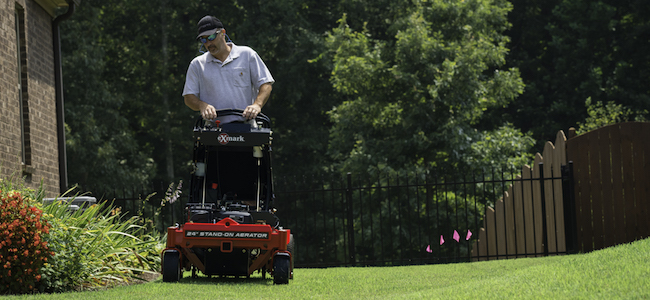
Check Your Lawn Mower and Perform Basic Maintenance
Late March and early April is a great time to start getting your lawn ready for another season. Early spring is the time to build a foundation for a lush, beautiful lawn. Take the time to complete these tasks and you’ll be looking at a healthy green lawn this summer
Now is the time go make sure your mower is in good shape and ready to go. Check to make sure it’s running properly and perform basic maintenance: Sharpen the blades, check the starter, belts, the air filter, battery, spark plug and tires. Replace worn or damaged parts now, rather than waiting until they fail.
The First Mow
For the first mow, set the blades about half an inch lower than you would normally set it in order to break up any light debris you might still have lying around your lawn. After that, you should raise the blade so the grass can grow tall enough to crowd out any weeds.
Check Your Irrigation System
Whether you have an installed irrigation system or just a hose and sprinklers, test those out, too. Make sure hoses aren’t worn and leaking, and that your irrigation system hasn’t been damaged by cold weather or rodents. Leaky hoses and damaged irrigation systems can waste water, driving up your water bill and potentially causing trouble if you live in an area with water restrictions.
Spring Clean Up
Take the time to tidy your lawn and inspect it for issues. Rake any remaining leaves and remove large sticks, and any trash blown onto your lawn by storms. Look for snow mold and the rings and dead spots that indicate fungal diseases, as well as bare spots you’ll want to fill. Note any issues with mole hills, as well as damage from water run off or animals, and make plans for fixing.
Give your lawn a good raking to break up the thatch layer and allow plenty of water and oxygen to reach the roots. If you had an unseasonably dry winter and your lawn is dry, you may want to water beforehand. Maintenance on dry soil can cause compaction, making root growth more difficult.
Aerating, Overseeding and Feeding
If you have a thick thatch layer, consider aerating or dethatching to help promote healthy root growth. If it’s warm enough, you may also want to overseed so new growth fills in thin spots and gives you a thick carpet of grass. If you notice bald spots from traffic or other damage as the grass begins growing, seed them as soon as possible to take advantage of spring growing season. The earlier you patch those bald spots, the more uniform your lawn will look when summer comes. And even if you don’t need to overseed or replant areas, you’ll want to provide your lawn with a good fertilizer to feed it during spring growth. Early spring is also a good time to apply a pre-emergent herbicide to keep new weeds from sprouting.
SHARE





